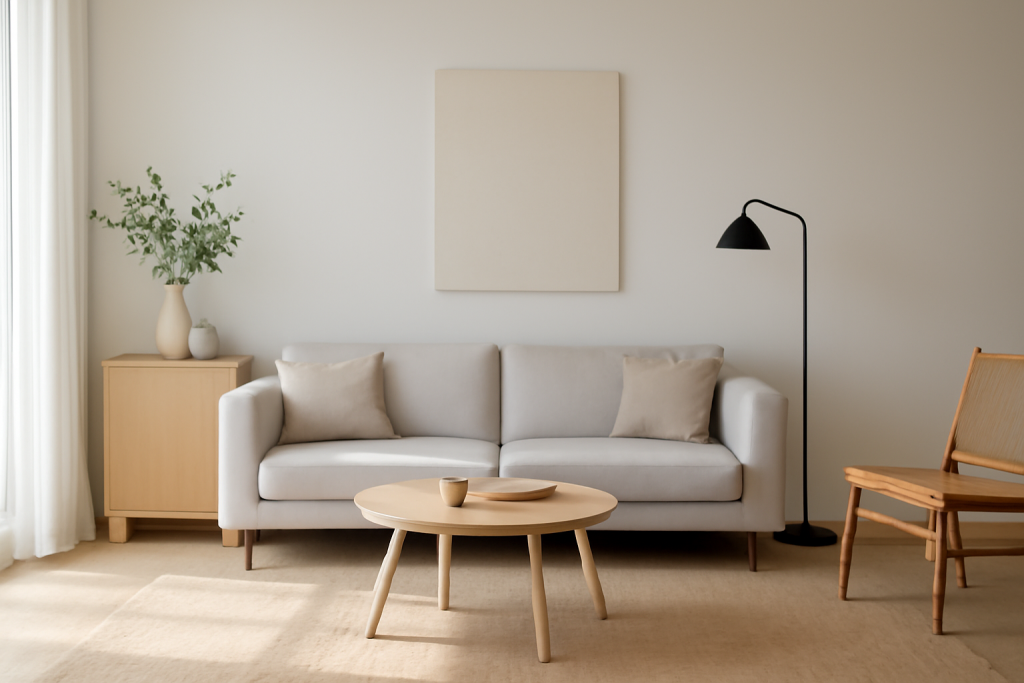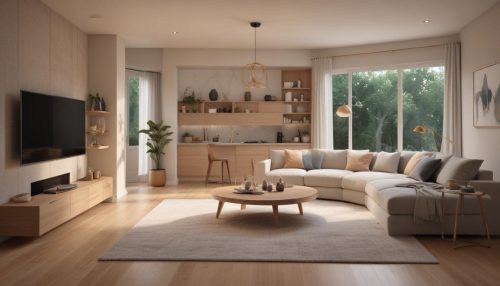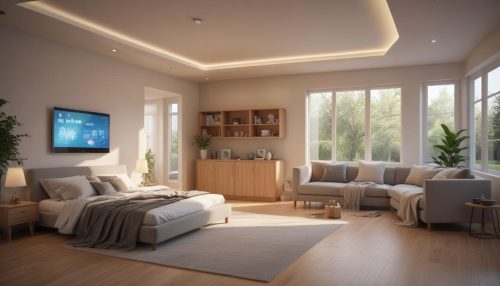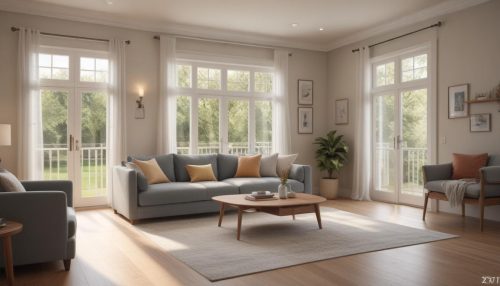Mastering the Art of Minimalist Home Design
Olivia Morgan July 18, 2025
In today’s fast-paced world, the minimalist design trend has become more than just a style choice; it’s a lifestyle. More and more homeowners are turning to minimalist home design to create spaces that are calming, functional, and free from unnecessary clutter. But what does it take to master the art of minimalist home design?
Minimalism in home design is about much more than just reducing the number of items in a room; it’s about creating an environment that promotes peace, focus, and simplicity. The goal is to embrace a less-is-more philosophy while ensuring the space remains aesthetically pleasing and functional.
In this article, we will explore the principles of minimalist design, the benefits it offers, and how you can incorporate minimalist ideas into your own home. Whether you’re designing a new space or decluttering an existing one, these tips will help you create a home that fosters tranquility, clarity, and purpose.
What is Minimalist Home Design?
Minimalism, in the context of home design, is about stripping away excess. It’s about creating spaces that are clean, functional, and devoid of unnecessary distractions. The idea is to have just enough—nothing more, nothing less.
This design style uses simple, neutral colors, sleek furniture, and a focus on clean lines. The goal is to create a peaceful environment that allows the mind to relax and focus. Every item should serve a purpose, contributing to the overall aesthetic and function of the space.
Minimalism is rooted in both form and function. It’s not about simply removing things; it’s about being intentional with what you include in your space. As Marie Kondo, a well-known minimalist organizer, suggests, everything in your home should “spark joy” and have a defined purpose.

What is Minimalist Home Design?
Minimalism, in the context of home design, is about stripping away excess. It’s about creating spaces that are clean, functional, and devoid of unnecessary distractions. The idea is to have just enough—nothing more, nothing less.
This design style uses simple, neutral colors, sleek furniture, and a focus on clean lines. The goal is to create a peaceful environment that allows the mind to relax and focus. Every item should serve a purpose, contributing to the overall aesthetic and function of the space.
Minimalism is rooted in both form and function. It’s not about simply removing things; it’s about being intentional with what you include in your space. As Marie Kondo, a well-known minimalist organizer, suggests, everything in your home should “spark joy” and have a defined purpose.
The Core Principles of Minimalist Design
There are several key principles that define minimalist home design. These guiding ideas will help you create a space that embodies simplicity, efficiency, and beauty.
1. Simplicity and Clean Lines
Minimalist design focuses on simplicity. This means clean lines, clutter-free surfaces, and functional design. The use of neutral colors, natural textures, and simple shapes helps create a calm and serene atmosphere. There’s an emphasis on openness, with plenty of space around each piece of furniture, rather than overcrowding.
Practical Tip: Choose furniture and décor with simple, streamlined designs. Avoid overly ornate pieces or items that don’t serve a specific purpose.
2. Decluttering and Organizing
One of the main components of minimalist home design is decluttering. It’s not just about removing items but being selective about what you keep. Items that are only decorative, don’t serve a purpose, or that you haven’t used in the last year should be removed.
Decluttering leads to a space where only the essentials remain. When organizing your home, consider functional storage solutions that help you keep everything in its place without sacrificing the open, airy feel of the room.
Practical Tip: Regularly assess your space to see what’s necessary and remove things that don’t add value. Use hidden storage options like sleek cabinets or built-in shelves to keep items out of sight but still accessible.
3. Functionality Over Excess
Minimalism emphasizes utility and purpose. Every item in a minimalist home should have a function, and if something doesn’t contribute to the space’s purpose or aesthetic, it’s time to let it go. The layout of the space should be designed to maximize efficiency and ease of use, from furniture placement to storage solutions.
Practical Tip: Opt for multi-functional furniture. For example, a sofa bed or a dining table with built-in storage can save space without sacrificing style or functionality.
4. Neutral Color Palette
Neutral tones dominate minimalist home design. White, beige, grey, and black are common choices, but the idea is to create a calm, consistent backdrop that allows the room’s architecture or key pieces of furniture to stand out. You can add depth and warmth with textures like wood, wool, and stone.
Practical Tip: Stick to a muted color palette for walls, floors, and furniture. Use accent colors sparingly to add interest and highlight specific design elements.
5. Natural Materials and Light
Minimalism often incorporates natural materials like wood, stone, and metal. These materials not only add texture and warmth but also tie the space to nature. Additionally, natural light plays a crucial role in minimalist homes. Large windows and open spaces invite natural light, which can make a room feel more expansive and connected to the outdoors.
Practical Tip: Embrace large windows and open floor plans. Use natural materials like wooden floors or stone countertops to add character while maintaining simplicity.
Why Minimalist Design is So Popular
Minimalist home design is more than just a trend—it’s a lifestyle that promotes well-being. Here are some reasons why so many people are embracing minimalism in their homes:
1. Increased Mental Clarity
A clutter-free environment leads to a clearer mind. Minimalism encourages organization and simplicity, which can reduce mental fatigue and help you focus on what really matters. In today’s overstimulated world, this mental clarity is a much-needed benefit.
2. Improved Productivity
A well-organized, minimalist environment helps improve productivity by eliminating distractions. Without the constant pull of excess clutter, your mind can focus on the tasks at hand. This can be especially helpful in spaces designed for work or study.
3. Sustainability and Longevity
Minimalism often aligns with sustainability. By focusing on quality over quantity, minimalist design encourages the purchase of well-made, durable furniture that will last for years. This can reduce waste and prevent the accumulation of unnecessary items, which is better for the environment.
4. Increased Sense of Calm and Order
Minimalist design is inherently calming. With fewer distractions and visual clutter, your home can become a sanctuary for relaxation and peace. This simplicity can be especially beneficial in bedrooms or living rooms, where you want to unwind after a long day.
How to Incorporate Minimalist Design into Your Home
Adopting minimalist design doesn’t mean you have to start from scratch. Here are some easy ways to incorporate minimalist principles into your existing home:
1. Start with Decluttering
The first step toward minimalist design is decluttering. Go through each room in your home and remove items that don’t serve a purpose or bring you joy. Consider donating or selling things that are in good condition but no longer necessary.
Practical Tip: Take one room at a time and sort items into categories: keep, donate, or discard. Be ruthless with items that don’t serve a function.
2. Invest in Quality, Functional Furniture
Instead of filling your space with random, cheap furniture, invest in a few key pieces that are both functional and beautiful. Look for furniture that has clean lines, a neutral color palette, and multiple uses (like a coffee table with hidden storage or a bed with drawers underneath).
Practical Tip: Choose furniture that serves multiple purposes. For example, a dining table that can also function as a workspace.
3. Use Simple, Neutral Color Schemes
Stick to neutral colors for walls, floors, and large furniture pieces. You can introduce pops of color through accessories like pillows, rugs, or artwork, but avoid overwhelming the space with too many colors or patterns.
Practical Tip: Use a light, neutral color for walls to create a sense of openness and calm. Add accents in darker or bolder hues for contrast.
4. Embrace Open Shelving and Smart Storage
Open shelving can be both practical and aesthetically pleasing, but be selective about what you display. Only keep items that are functional or meaningful. Use baskets or hidden storage solutions to keep non-essential items out of sight.
Practical Tip: Install floating shelves in the kitchen or living room to display only essential or decorative items. Store less-used items in cabinets or hidden drawers.
5. Incorporate Natural Materials and Light
Bring nature indoors by incorporating natural materials like wood, stone, or plants into your space. Open up your home to natural light with large windows or glass doors, which will make the space feel brighter and more expansive.
Practical Tip: Choose wooden furniture pieces or stone countertops to add warmth and texture. Consider adding houseplants to bring life and color to your space.
Conclusion
Mastering the art of minimalist home design is about creating spaces that are simple, functional, and intentional. By focusing on quality over quantity, reducing clutter, and choosing pieces that serve a purpose, you can create a home that promotes mental clarity and well-being. Minimalism is not just about reducing your belongings; it’s about creating an environment that fosters peace, productivity, and sustainability.
Whether you’re starting from scratch or slowly introducing minimalist elements into your home, the key is to embrace the less-is-more mentality and focus on creating spaces that bring value, beauty, and function into your life.
Reference
- Verywell Mind – “The Connection Between Cleanliness and Mental Health” – https://illustrarch.com
- Home & Gardens – “Minimalism resets your brain” – https://www.homesandgardens.com
- New York Post – “Clean up your act: … decluttering saves your mental health” – https://www.asteroidhealth.com





